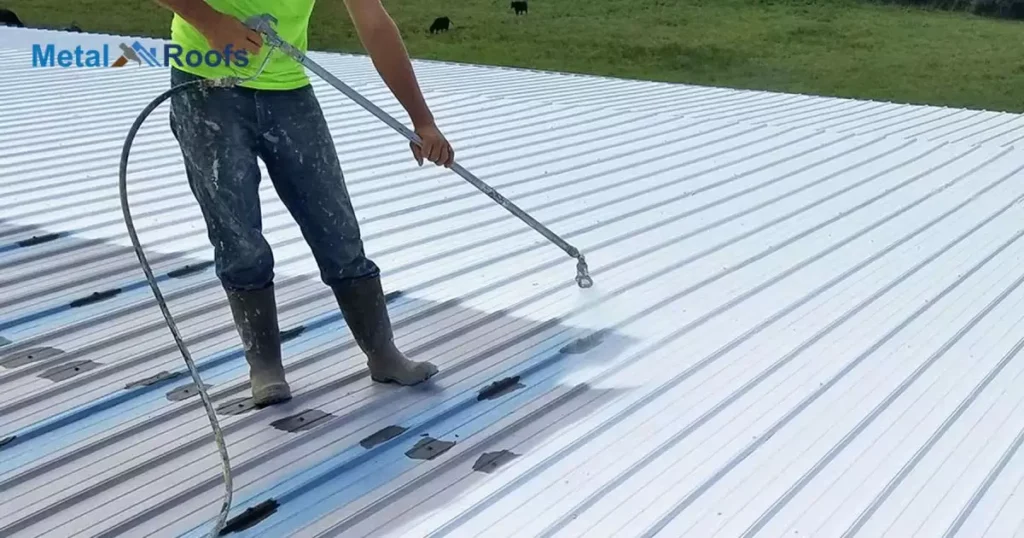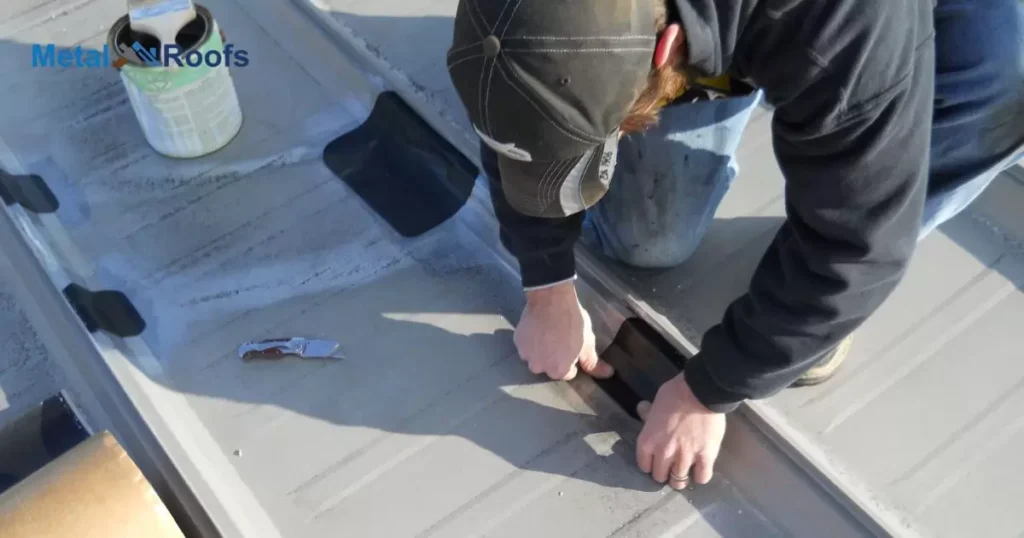Silicone coating can be applied on top of acrylic coating to enhance durability and waterproofing. It creates a protective layer that helps extend the lifespan of the roof. it’s important to properly clean and prepare the surface before applying silicone to ensure adhesion and effectiveness.
Are you wondering if you can put silicone roof coating over acrylic? The answer is yes! Silicone coating can be applied over acrylic, adding an extra layer of protection and durability to your roof. This simple process can help extend the lifespan of your roof while providing enhanced waterproofing.
Consider applying silicone roof coating over acrylic. This combination adds an extra shield against the elements, improving durability and extending your roof’s lifespan. Ensure thorough surface cleaning and preparation before application for the best results. With this simple step, you can enhance waterproofing and safeguard your investment.
Key Takeaways
- Yes, a silicone roof coating can be applied over acrylic.
- This process enhances the protection and durability of the roof.
- Proper surface cleaning and preparation are crucial for effective adhesion.
- It extends the lifespan of the roof and improves waterproofing.
- Following the manufacturer’s instructions is key for optimal results.
What is Silicone Roof Coating?
Silicone roof coating is a protective layer applied to roofs to enhance durability and waterproofing. It’s made from silicone polymers that create a seamless membrane over the surface. This coating is highly flexible, allowing it to expand and contract with temperature changes.
Installing vents on a metal roof enhances its durability and performance. It provides excellent UV resistance, preventing premature deterioration of the roof. Silicone roof coating, coupled with the installation of vents, is a cost-effective solution for extending the lifespan of roofs and reducing maintenance needs.
Silicone Roof Coating Pros and Cons

Here are some pros and cons to help you decide.
Pros:
- Excellent durability and weather resistance.
- Provides seamless, waterproof protection.
- Reflects UV rays, reducing energy costs.
- Can be applied to various roofing materials.
Cons:
- Higher initial cost compared to some alternatives.
- Requires proper surface preparation for adhesion.
- Limited color options are available.
- May require professional application for best results.
What is Acrylic Roof Coating?
Acrylic roof coating is a protective layer applied to roofs. It’s made from acrylic resins and offers various benefits. This coating helps seal and protect the roof from weather damage. It’s known for its durability and ability to reflect sunlight, reducing heat buildup.
Acrylic roof coating is versatile and can be applied to different roofing materials. It forms a seamless membrane that prevents leaks and extends the life of the roof. This coating is also resistant to mold and mildew, keeping the roof clean and intact.
Acrylic Roof Coating Pros and Cons
Acrylic roof coating offers several benefits, such as affordability and ease of application. It provides a protective layer that reflects sunlight, reducing energy costs. Acrylic coatings may require more frequent reapplication compared to other options.
On the flip side, acrylic coatings are versatile and can be applied to various roofing materials. They offer excellent adhesion and flexibility, accommodating the movement of the roof. Regular inspections and upkeep are necessary to address any issues promptly.
Acrylic Vs. Silicone Roof Coating: How They Compare
Acrylic roof coatings are generally more affordable than silicone coatings but may require reapplication every few years. They offer moderate reflectivity and UV stability but are susceptible to cracking and peeling over time without proper maintenance.
| Aspect | Acrylic Roof Coating | Silicone Roof Coating |
| Cost | Affordable | Relatively Expensive |
| Longevity | Requires Reapplication Every Few Years | Longer Lasting, Less Frequent Maintenance |
| Reflectivity | Moderate | High |
| UV Stability | Moderate | Excellent |
| Durability | Susceptible to Cracking and Peeling Over Time | Highly Durable, Resistant to Cracking |
On the other hand, silicone roof coatings are relatively expensive upfront but are longer-lasting and require less frequent maintenance. They provide high reflectivity, and excellent UV stability, and are highly durable, making them resistant to cracking.
Maintain Silicone Roof Coating on Metal Roofing
Maintaining silicone roof coating on metal roofing is essential for long-term protection. Regular inspections ensure any damage or wear is promptly addressed, preventing leaks and extending the roof’s lifespan. Clean the surface thoroughly before applying silicone coating to maintain its effectiveness.
Consider applying a primer before recoating to enhance adhesion and durability. This simple step can significantly improve the performance of the silicone coating, providing better protection against harsh weather conditions. By staying proactive with maintenance, you can keep your metal roof in optimal condition for years to come.
Common Problems with Silicone Roof Coating on Metal Roofing

When using silicone roof coating on metal roofing, some common problems may arise.
- Adhesion issues: Silicone may not adhere well to certain metal surfaces, leading to peeling or delamination.
- Ponding water: Silicone coatings can trap water if not applied properly, causing ponding and potential leaks.
- Temperature sensitivity: Extreme temperatures can affect the performance of silicone coatings, leading to cracking or degradation over time.
- Surface preparation: Inadequate surface cleaning and preparation can hinder the effectiveness of the silicone coating, reducing its lifespan and protective properties.
To avoid these issues, ensure proper surface preparation, and application techniques, and consider consulting with a professional for best results.
Frequently Asked Questions
Can you put silicone on top of acrylic?
Yes, silicone can be applied over acrylic.
What is better acrylic or silicone roof coating?
It depends on factors like climate and budget.
Can silicone roof coating be recoated?
Yes, silicone roof coating can be recoated.
Conclusion
Applying silicone roof coating over acrylic presents a viable solution for enhancing roof durability. Despite potential challenges like adhesion and temperature sensitivity, proper preparation and application can mitigate these issues. This approach extends the roof’s lifespan and bolsters waterproofing, safeguarding your investment.
Considering factors like climate and budget helps determine whether acrylic or silicone coating is better. Both offer protective benefits, but silicone’s recoating potential may provide long-term advantages. Maintaining a well-prepared surface and adhering to manufacturer guidelines ensures optimal results.










